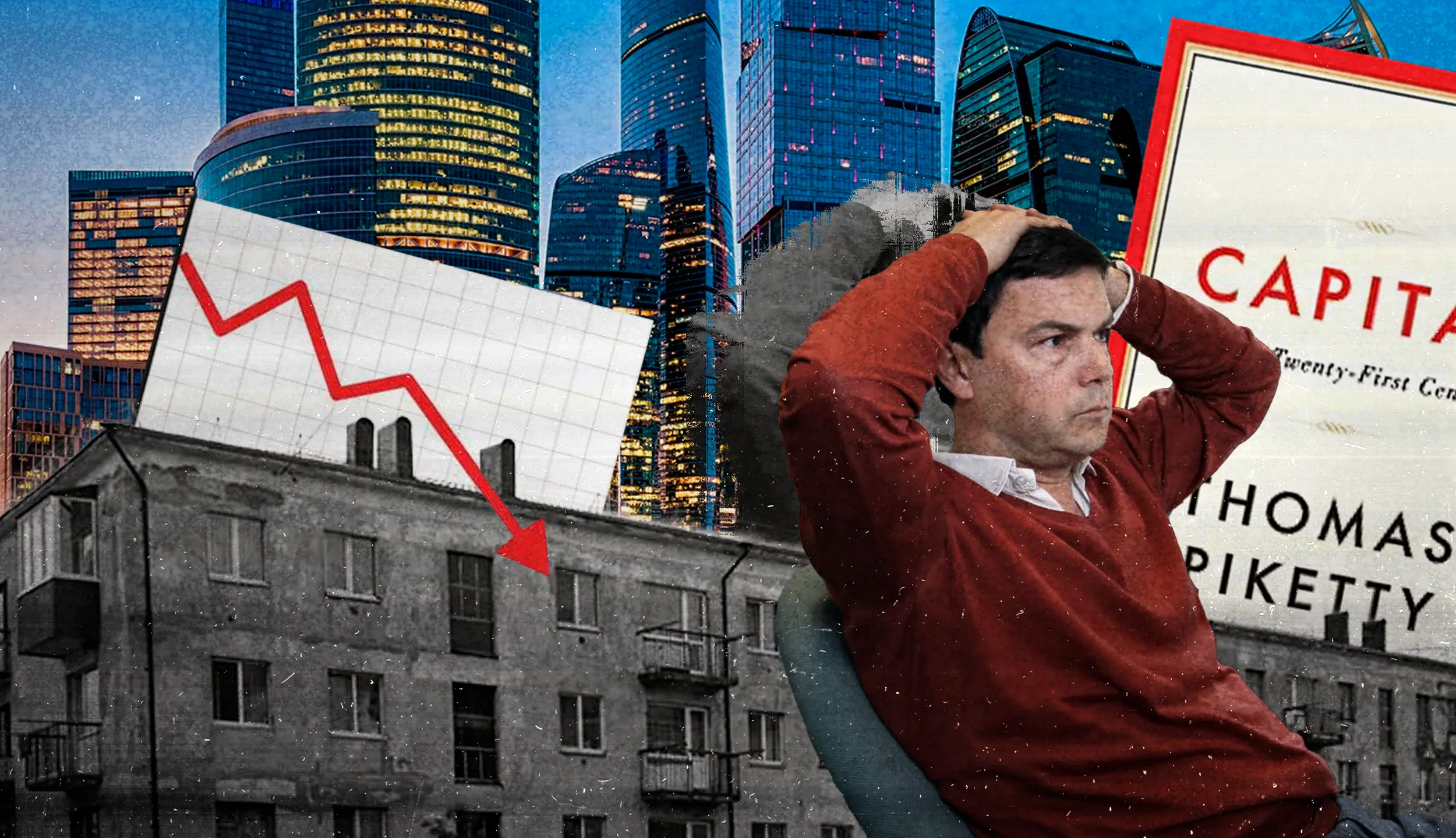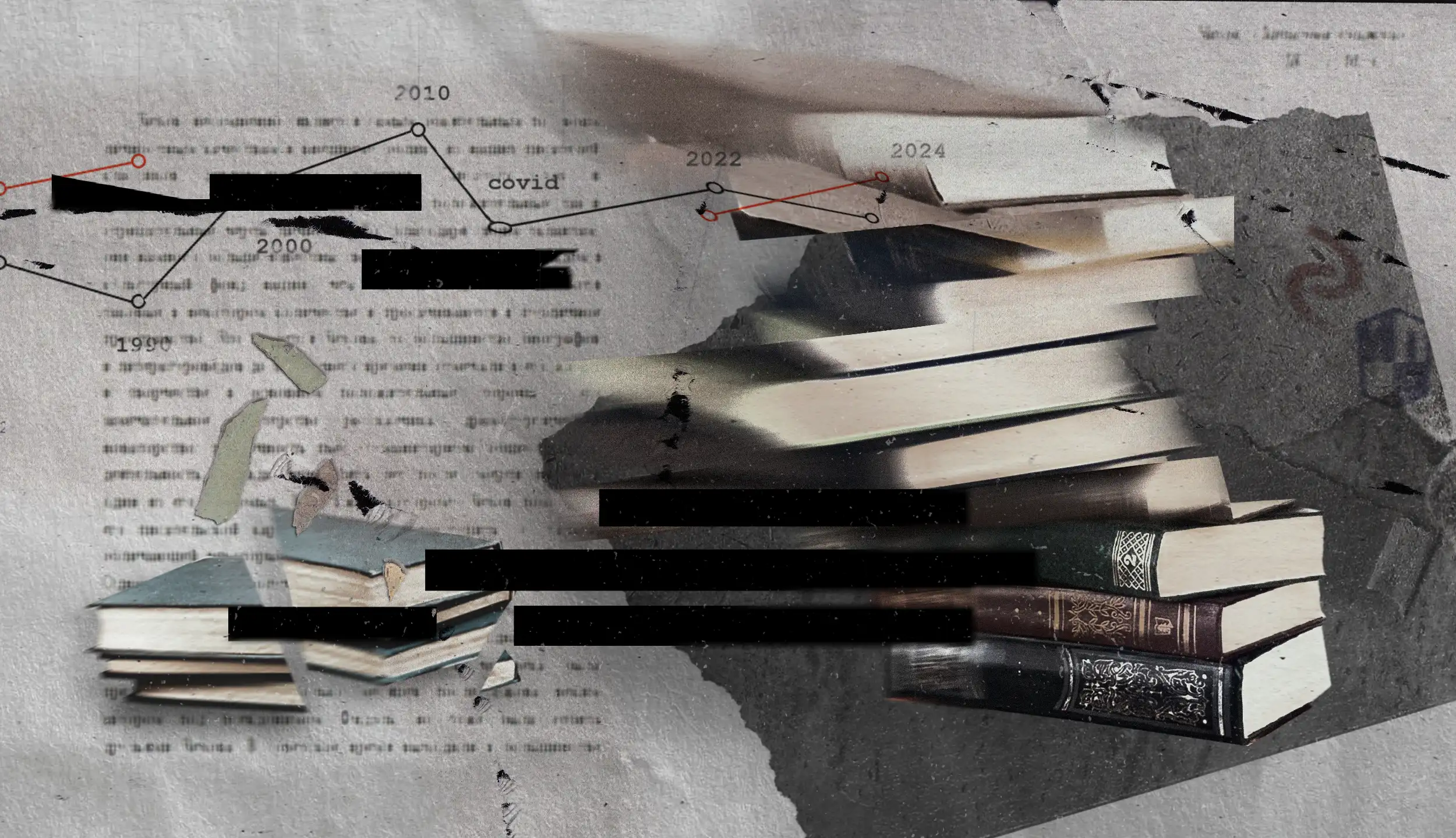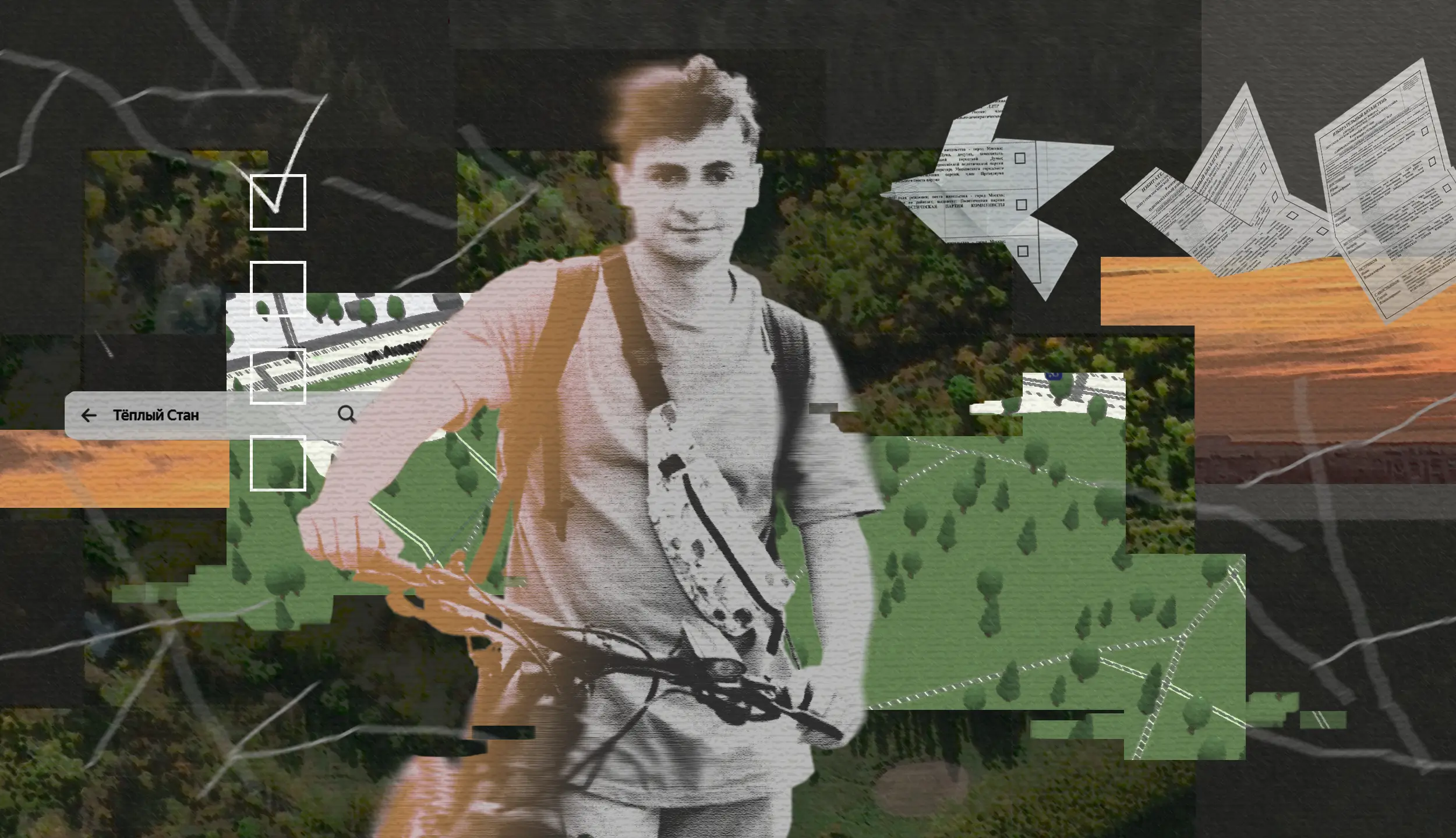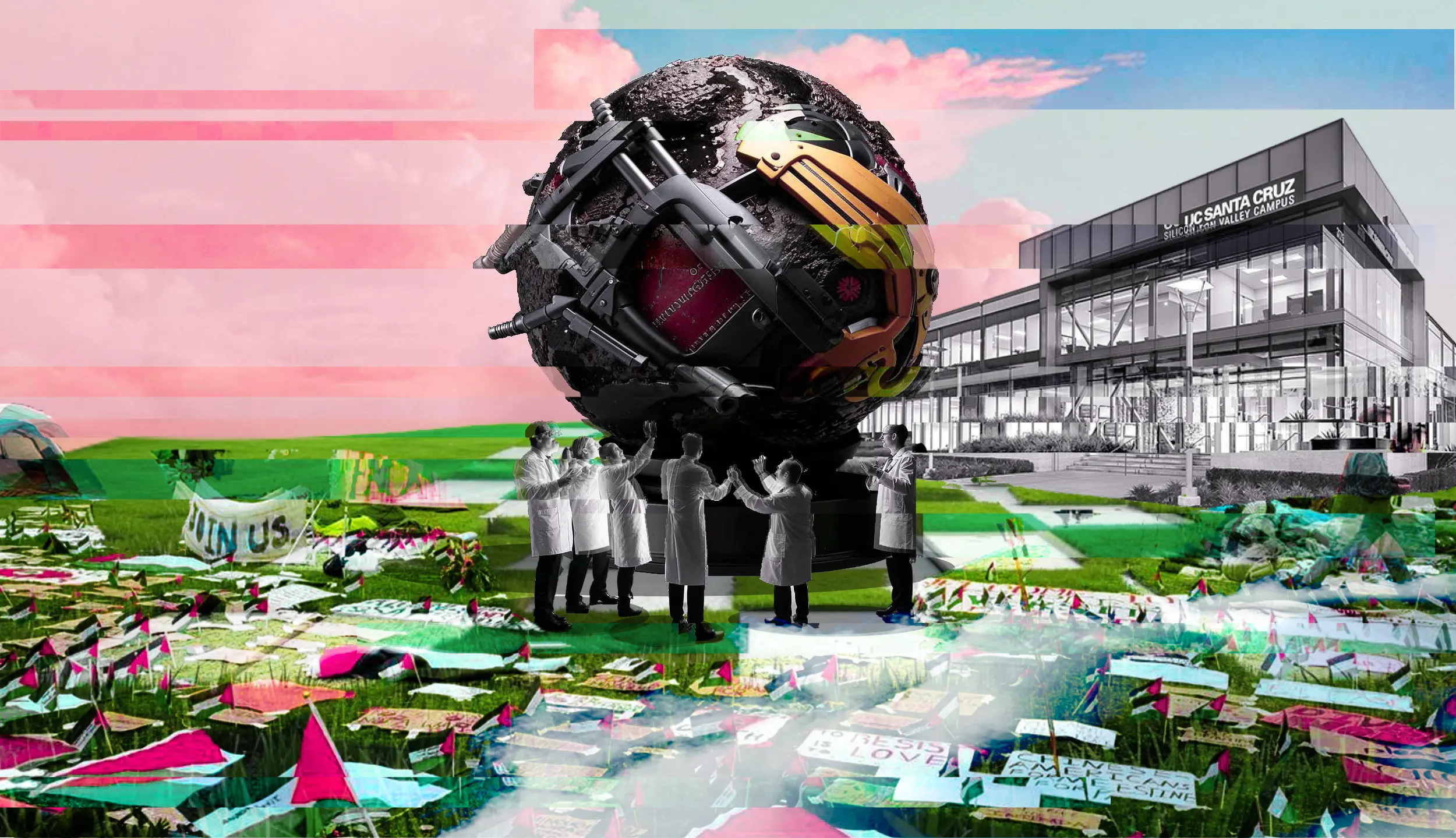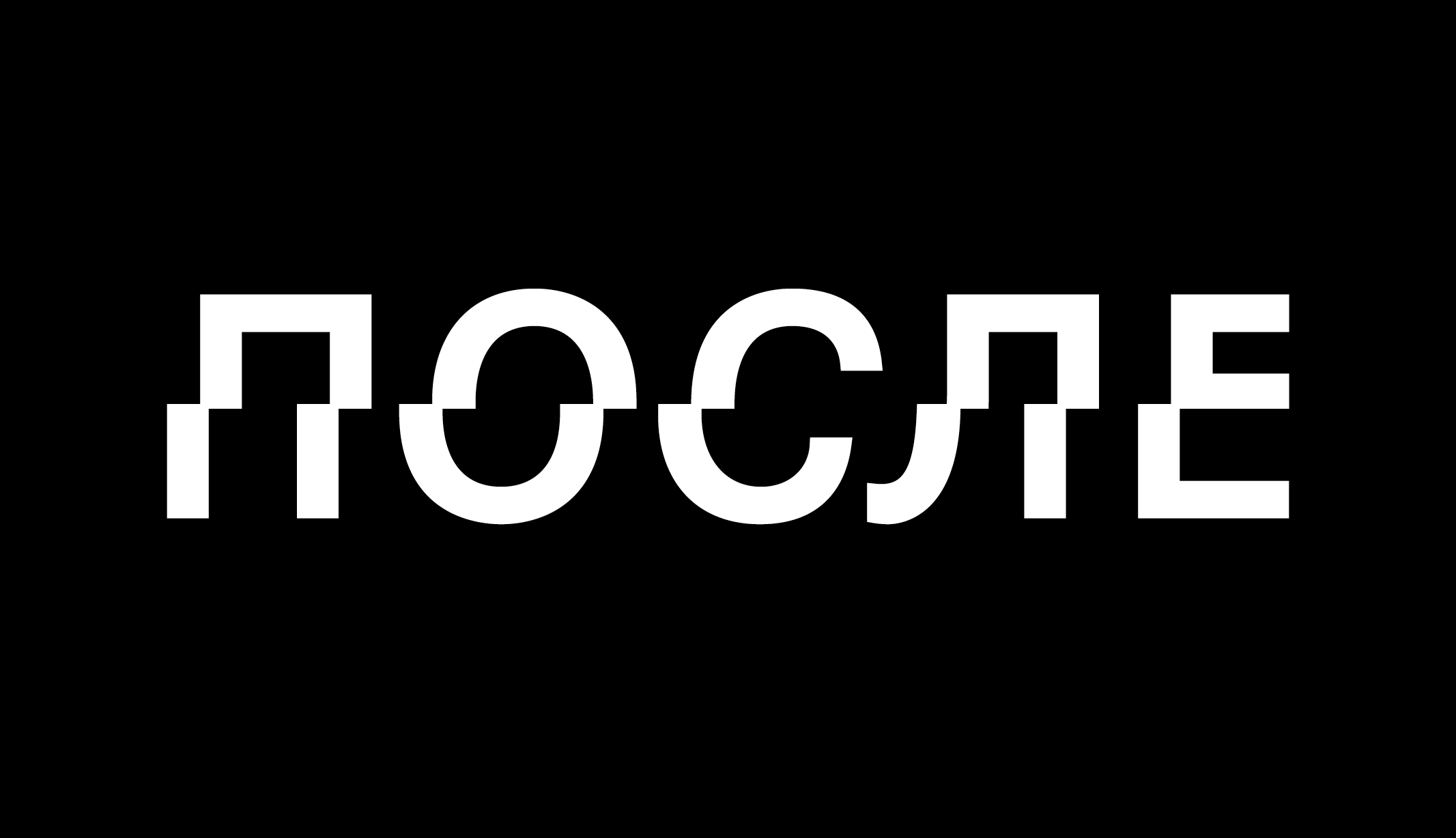In 2021, the French economist Thomas Piketty authored a brief yet consequential work titled A Brief History of Equality. The fundamental idea of the book is straightforward: over the past two centuries, starting with the Enlightenment and the French Revolution, humanity has taken a monumental step toward creating a just, equal, and free society. However, there are several critical “disclaimers.” A significant level of inequality still exists, albeit markedly reduced. Moreover, the process of moving towards equality itself appears fragmented, non-linear, and prone to pauses and even reversals. On one hand, the last 40 years have seen the expansion of political rights for many marginalized groups; on the other hand, the proliferation of neoliberalism has led to a resurgence in economic inequality, in contrast to the noticeable decline in the post-war era.
Piketty contends that the journey toward equality across all facets of public life is a partly successful yet profoundly incomplete undertaking. Moving forward demands a fresh surge of civic engagement, quite possibly the most extensive in history, encompassing trade unions, political parties, community organizations, intellectuals, progressive governments, and politicians. This uprising is essential to decisively counter, more urgently than ever, the influential dominant class that stifles the social and economic rights of the global proletariat. All these forces must combine to curb the unchecked pursuit of capital accumulation by the 1%, a recurring theme in Bernie Sanders’ speeches.
In his book, Piketty traces the social inequality trends in Western Europe over the last 200 years, particularly highlighting colonial policies as a root cause of inequality in nations impacted by European military expansion. It is not hard to imagine how Piketty’s critiques of neoliberalism could be co-opted by Russian propaganda to condemn “the Collective West” [note: this is a term used by Russian officials including Putin since 2021 to describe the combined threat from the Western countries]. Of course, this is only feasible if we overlook all the nuances and the acknowledgment of the substantial role played by European societies in establishing the earliest and limited, albeit somewhat democratic and social states in history.
Hence, it is crucial to examine Piketty’s principal arguments within the Russian context. The objective of this article is to scrutinize the history of inequality and its present status in Russia, drawing parallels with the European experience through the analytical lens of the world’s top left-wing economist.
The Great Russian Redistribution
According to Piketty, advancements in the equitable redistribution of property and power across human civilization in the past 200 years have predominantly manifested in four key aspects. Firstly, the emergence and legislative embrace of universal public goods, including free education and healthcare. Secondly, the shift of the majority of wealth from the wealthiest 10% of the population to the middle-income 40% through progressive tax policies, fostering the rise of a middle class. Thirdly, the enhancement of labor laws and the broadening of workers’ rights. And fourthly, the democratization of the allocation of political power, encompassing the introduction of universal suffrage, the liberation of women and other marginalized groups, and the establishment of legal equality.
Of course, all these changes primarily affected the most developed European countries with robust civil society, trade unions, and human rights organizations. In the Global South, progress towards equality was significantly less impressive. In Russia, contrasted with Western countries, the process of the ‘great redistribution’ also lagged behind and was accompanied by social upheaval. A notable example is serfdom in tsarist Russia, which persisted until 1861 and was only abolished after the defeat in the Crimean War. Russian serfdom exhibited several notable differences from American or French slavery: unlike the latter, it was primarily applied not to other races and ethnic groups but to the majority of the titular population; and unlike the former, it was widespread not in colonial territories but in the metropolis (1). Consequently, even in the years leading up to its abolition, serfdom impacted up to 35% of the population (2). For comparison, in the United States, this figure for slavery was considerably lower, amounting to no more than 13% on the eve of the Civil War (3).
However, amid the brief period of intense revolutionary transformations in the 1910-1920s, the USSR temporarily outpaced certain European states in implementing progressive initiatives in some aspects of social life. The graph presented by Piketty in the book, illustrating the progression of suffrage across various European countries, is noteworthy:
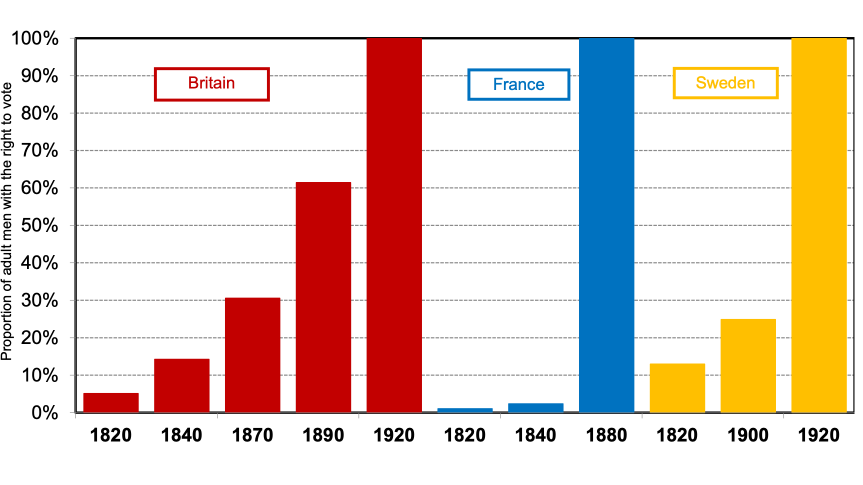
The chart illustrates the various phases of male suffrage in European countries. Interpretation. The proportion of adult men with the right to vote (taking into account the electoral franchise, i.e. the level of taxes to pay and/or of property to own in order to be granted this right) rose in Britain from 5% in 1820 to 30% in 1870 and 100% in 1920, and in France from 1% in 1820 to 100% in 1880. Sources and series
In Russia until 1905, the realization of suffrage was hardly possible due to the absence of elections at the highest state level, as there were only local elected bodies such as City Dumas. Even after the establishment of the State Duma, suffrage remained highly restricted, characterized by stringent age, property, class, and estate quotas, with voting and candidacy limited exclusively to men. However, in 1917, with the advent of the February Revolution, Russia became the second country after New Zealand to institute universal suffrage, liberated from the aforementioned qualificaions and gender restrictions (4).
The situation regarding economic equality differed somewhat. According to Piketty’s research on the evolution of inequality in Russia, on the eve of the October Revolution, the income gap between the richest 10% and the poorest 50% of the population in the Russian Empire was extremely high, but comparable to that in European countries (5). After 1917, due to widespread expropriation and redistribution of landlords’ property (and, consequently, their associated income), the expansion of labor legislation, the introduction of the social state (payment of pensions. and benefits for the unemployed), as well as a radical restructuring of the entire economic system, the income ratio changed dramatically. The USSR became one of the most “equal” countries in the world. By 1928, the share of earnings of the poorest 50% exceeded that of the richest 10%, amounting to 27.2%. Inequality increased slightly in the 1930s and post-war years but declined again in the 1960s and remained virtually unchanged until the start of liberal reforms. The indicators of peak Soviet “equality” are comparable to those in modern social democratic countries such as Sweden.
The chart illustrates the income inequality in the Russian Empire, USSR, and Russia. The portion of the wealthiest 10% is displayed in blue, the portion of the poorest 50% is represented in red.
For a number of reasons, however, it is important not to romanticize the USSR. First, while overall wealth and the quality of life in the Soviet Union in the second half of the twentieth century, particularly in its later years, exceeded world averages, measures such as GDP per capita lagged dramatically behind the most developed Western countries. Second, as a result of collectivization, the Second World War, and the anti-labor measures of the Stalinist era (including the increase in maximum working hours to 8 hours a day, 7 days a week, and the temporary reintroduction of paid education (6)), inequality began to rise in the 1930s and 1940s. Third, the most significant cause of inequality in the USSR, which Piketty’s research does not sufficiently emphasize, was the establishment of a powerful class known as the nomenklatura. Mikhail Voslensky, a renowned scholar of the USSR, argued that the nomenklatura’s income did not significantly exceed that of other classes (7). However, they enjoyed greater access to an array of resources, including public consumption funds, personal chauffeurs and vehicles, high-quality meals, exclusive sanatoriums, and free overseas travel.
The issue of colonialism and regional disparity in the Soviet Union is also noteworthy (8). The colonial rule over Central Asia and other underdeveloped regions during the Russian Empire was somewhat more humane in terms of casualties and treatment of the population than that of Western Europe, but essentially did not differ much from it.
During the Soviet period, the situation changed dramatically. Soviet colonialism had an ambivalent, both negative and partially positive, character: on the one hand, cultural and religious pressures continued, national languages were replaced by Russian, and mass repressions against local intellectuals took place (such as the Karaganda affair); on the other hand, extensive programs were implemented to provide the population of the republics with education. For instance, the number of higher education institutions in Kazakhstan grew from 0 in 1917 to 50 by the 1980s, and the number of students increased from 0 to 267 per thousand of the population (9). A 225-fold increase in industrial production between 1913 and 1985 was accompanied by man-made disasters such as the drying up of the Aral Sea.
At the same time, the development of the planned economy and industry only partially solved the problem of inequality between regions, which persisted until the collapse of the USSR. For example, in terms of per capita budget expenditures, Estonia exceeded Tajikistan by almost three times. An even greater divergence was observed at the regional level within the RSFSR, where the gap between the richest and poorest subjects remained about 5.5 times throughout the entire period of the late Soviet Union (10).
Inequality in Contemporary Russia
Over the last thirty years, economic inequality in Russia has worsened significantly compared to the Soviet era. The incomes of the super-rich have experienced a sharp rise, approaching pre-revolutionary levels. Economic liberalization played a pivotal role in this shift, with the top 1% gaining control of a larger share of the national income, surging from 6% in 1989 to 16% in 1996. But the growth of inequality did not stop even after the “dashing nineties” [Translator’s note: expression describing the period of the formation of the Russian Federation in the 1990s, with the social instability and the growth of crime associated with the change of state system]. In 2021, the consolidated income share of the ruling elite amounted to 23.8%, a figure 24 times higher than that of the average citizen. The contemporary situation in Russia manifests even more pronounced property inequality. This stems from the dubious distribution of property in the 1990s, coupled with the consolidation and expansion of the oligarch class. This has culminated in an almost “neo-feudal” system, where the top 1% of the super-rich possess nearly half of the country’s total property.
The chart illustrates income inequality in Russia, with green representing the top 1%, blue the highest 10%, and red the lowest 50%.
The chart displays the distribution of property among different groups in Russia. The green section represents the property share of the wealthiest 1%, the blue section of the top 10%, and the red section of the lowest 50%.
In addition to high levels of income inequality, the Russian situation is marked by significant regional and intra-regional disparities, which stand out against the background of countries with similar geographic and demographic characteristics. To illustrate, the variance in PPP GDP per capita between Russia’s wealthiest and poorest regions is 54.5 times, while the divergence in average annual salaries is 4.7 times. Meanwhile, in the United States, the PPP GDP difference is only 5.1 times and wages differ by only 2.4 times. Although some European countries may be accused of neo-colonialism (only France can probably be charged to the greatest extent), in contemporary Russia, the situation is critical and internal colonialism is thriving, demonstrating both economic and pronounced ethnic characteristics (the poorest regions are national republics).
Although the Soviet Union faced issues with the redistribution of political and economic power and the democratization of the country, some advancement was made in the early phases of democratic transformation during the 1980s. In particular, legislative pursuits were initiated in 1986 to resurrect cooperative forms of ownership. Piketty repeatedly emphasizes the superiority of cooperatives over private companies in terms of worker equality, economic democracy, and support for the principles of egalitarianism. In 1988, the adoption of the “On Cooperation” law aimed to bring a significant part of the food industry and domestic services into cooperation, which had been successfully achieved in many other socialist republics, such as the GDR (25-30% of bakery and sausage production) or Czechoslovakia (15% of tourist services) (11).
However, cooperation efforts eventually failed due to an underdeveloped legal framework, numerous state restrictions on cooperatives, inadequate subsidy support, and an economic crisis on the brink of the USSR’s collapse. Most democratic changes met the same fate: progressive transformations either failed, were abandoned, or were controlled by the ruling nomenklatura and oligarchs to meet their interests. The Russian Federation has become an electoral neoliberal autocracy, exhibiting characteristics similar to the most unequal states worldwide. Oligarchic capital is closely tied to the state, and the economy is stratified. A system dominated by one party and a fully controlled opposition has emerged, along with widespread censorship. Virtually all independent media outlets are either persecuted or co-opted (12).
As repeatedly noted by Piketty in his book, there has been a steady trend of increasing inequality worldwide over the past 30-40 years. However, in Russia, due to the disintegration of the Soviet economy and radical neoliberal reforms, this phenomenon has become particularly destructive and monstrous. When Russian propaganda utilizes progressive arguments to critique increasing inequality and neo-colonial policies in the West, they align with the implications of Pikett’’s research. However, when examining his findings and research in the Russian context, it reveals a significantly more unfair and unequal economic system.
Can Russia escape from this path of social stratification that resembles the worst cyberpunk worlds with their high tech, low life? Piketty advocates several progressive solutions and reforms to rejuvenate the social state, democratize politics and the economy, and highlights the “uprising” of the progressive part of civil society. These ideas seem to be very relevant for Western European countries, but are questionable and insufficient in the case of Russia. A few instances confirm this contradiction.
First, Piketty proposes a large-scale reform to democratize the media in developed capitalist countries, including reserving half the seats on the boards of media companies for journalists, as well as fixed and equal state funding for media of different ideological political parties and organizations. For these reforms to be meaningful, a basic level of democratization within society is needed. This would require the emergence of independent and ideologically differentiated media outlets, alongside truly competitive parliamentary politics. In Russia, however, the vast majority of legal media outlets operate under conditions of electoral authoritarianism, working for state-allied corporations.
Second, Piketty consistently underscores the pivotal role of well-organized trade unions and a thriving, progressive middle class in the contemporary struggle against the dominance of neoliberal policies. When juxtaposed with countries like France or the UK, Russia’s independent trade union movement appears considerably less financially, legally, and organizationally empowered. Moreover, the middle class is virtually non-existent, and there is scant mass support for progressive left views.
This is only a small portion of the many disparities that prevent Piketty’s proposals from being as applicable in Russia as they are in Western countries, such as France and Great Britain. It may be necessary to adopt a different and more radical approach, including a fundamental re-examination of the existing economic and political framework, to address the deep-seated and pervasive inequality permeating all aspects of social life in Russia. The practicality and theoretical underpinnings of this extensive overhaul are not within the scope of this article, but should become a central issue in the creation of a progressive social program for the transformation of the Russian economy, state, and society.
- Fedorov V. (1966). Padenie krepostnogo prava v Rossii: Dokumenty i materialy. Vyp. 1: Social’no-jekonomicheskie predposylki i podgotovka krest’janskoj reformy [The Fall of Serfdom in Russia: Documents and Materials. Vol. 1: Socio-economic prerequisites and preparation of the peasant reform]. Moscow, 20–21, 26–29.
- Trojnickij A. (1858). O chisle krepostnyh ljudej v Rossii [On the Number of Serfs in Russia]. Sankt-Peterburg: Tipografija ministerstva vnutrennih del, 38.
- Schulten, S. (2010). The Cartography of Slavery and the Authority of Statistics. Civil War History, Volume 56, Number 1, 5–32.
- Gorylev, A., Zelenov, A. (2008). Osobennosti stanovlenija izbiratel’nogo prava v Rossii [Characteristics of the development of suffrage in Russia]. Vestnik Nizhegorodskogo universiteta im. N. I. Lobachevskogo, (5),186–194.
- Novokmet, F., Piketty, T., & Zucman, G. (2018). From Soviets to oligarchs: inequality and property in Russia 1905-2016. The Journal of Economic Inequality, 16, 189–223.
- Leongard, V. (1984). Revoljucija otvergaet svoih detej [The revolution dissmisses its children] London: Overseas Publications Interchange Ltd, 91–92.
- Voslensky, M. (1984). Nomenklatura: The Soviet Ruling Class. New York: Doubleday.
- This topic requires special attention and in-depth elaboration in other articles and studies.
- Rather, Z., & Abdullah, D. (2019). The Development of Soviet Education in Kazakh SSR (1917-1991). The Journal of Central Asian Studies, 35.
- Bakanov, S. (2022). Bjudzhetnoe neravenstvo v SSSR v 1950-1980-e gg [Budgetary Inequality in the USSR in 1950-1980s]. Ural’skij istoricheskij vestnik, (3), 153–160.
- Kirsanov, R. (2014). Razvitie kooperativnogo sektora v period perestrojki i ego rol’ v stabilizacii potrebitel’skogo rynka v SSSR [Development of the cooperative sector during perestroika and its role in stabilizing the consumer market in the USSR]. Vestnik Volgogradskogo gosudarstvennogo universiteta. Serija 4: Istorija. Regionovedenie. Mezhdunarodnye otnoshenija, (4), 30–36.
- Gunitsky, S. (2015). Corrupting the Cyber-Commons: Social Media as a Tool of Autocratic Stability. Perspectives on Politics, 13(1), 42–54.

